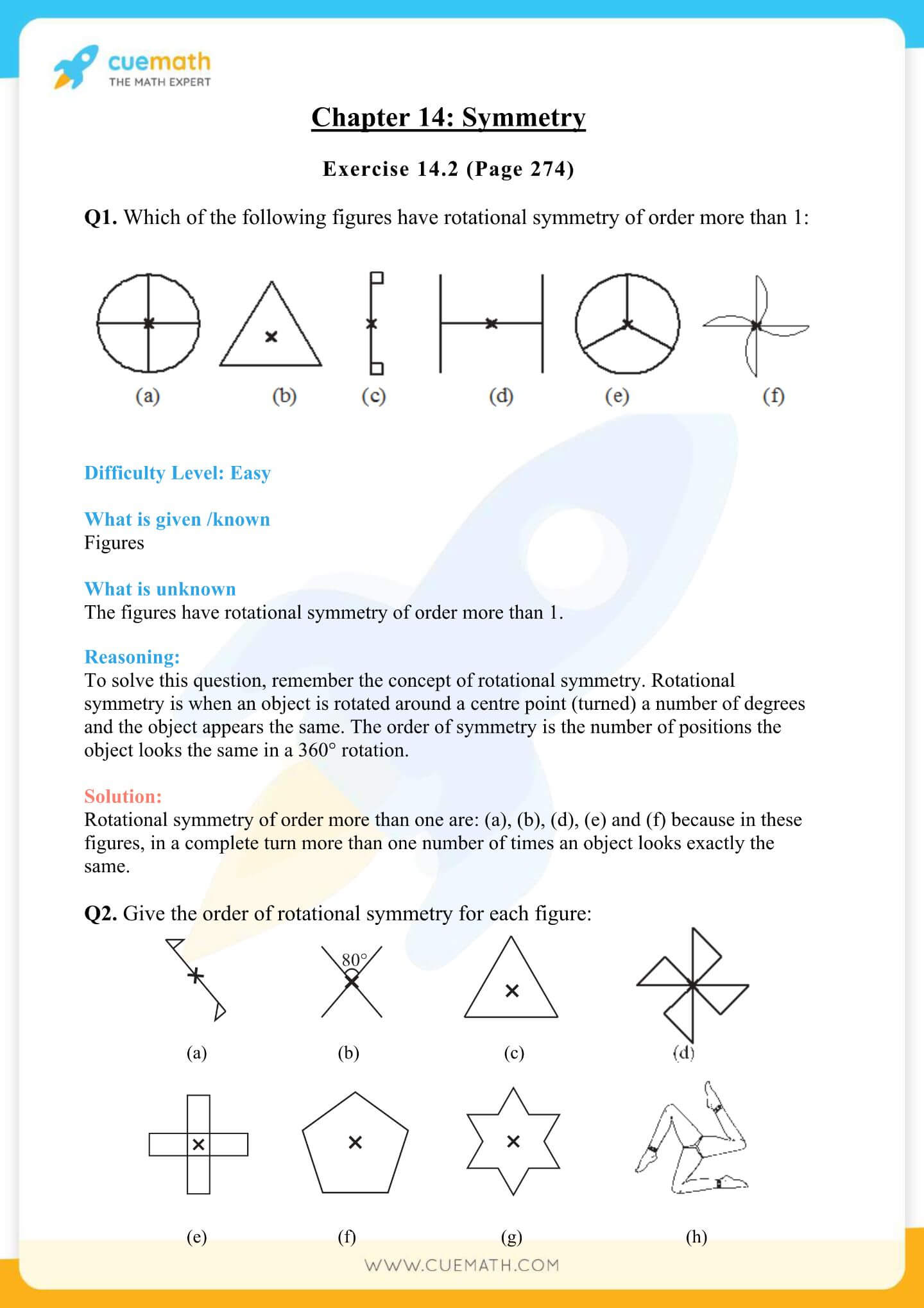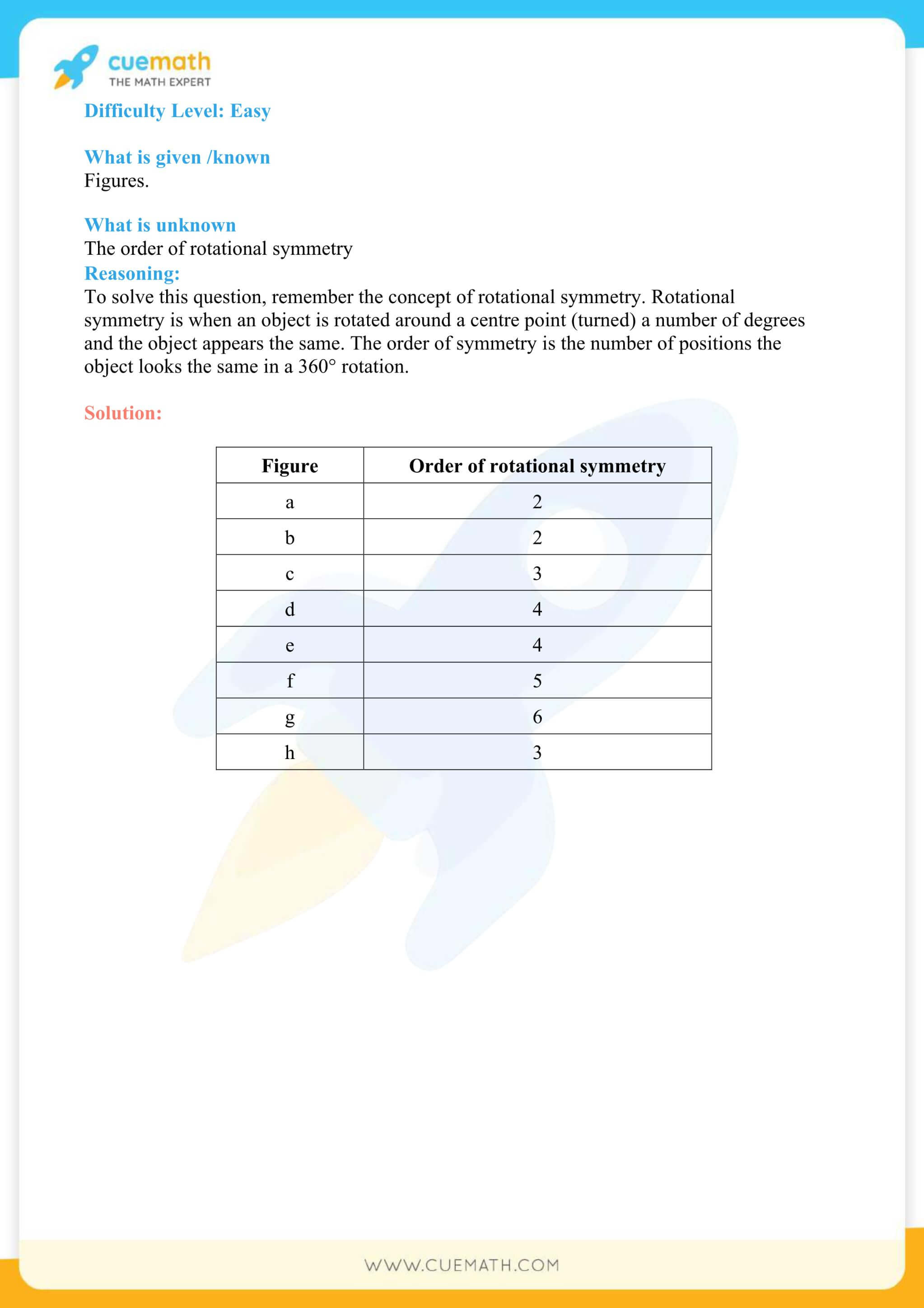NCERT Solutions Class 7 Maths Chapter 14 Exercise 14.2 Symmetry
Elaborating further on the topic of symmetry, the NCERT solutions for Class 7 maths Chapter 14 exercise 14.2 Symmetry explains how the shape and size of an object do not change when it is rotated, and the rotation of an object happens around a fixed point. The center of rotation is this fixed point. The angle of rotation is the angle of turning during rotation. A full turn entails a complete 360-degree revolution, while a half-turn is a 180-degree revolution, and a quarter-turn is a 90-degree rotation. For example, a windmill would not look symmetrical, but when rotated by 90-degrees, it would look the same hence it is said to have rotational symmetry. The NCERT solutions Class 7 maths Chapter 14 exercise 14.2 has 2 questions based on the above concept.
All the objects have rotational symmetry of order 1 because they possess the same position when rotated by 360 degrees. The Class 7 maths NCERT solutions Chapter 14 exercise 14.2 Symmetry can be downloaded from the link herewith :
☛ Download NCERT Solutions Class 7 Maths Chapter 14 Exercise 14.2
Exercise 14.2 Class 7 Chapter 14


More Exercises in Class 7 Maths Chapter 14
NCERT Solutions Class 7 Maths Chapter 14 Exercise 14.2 Tips
The NCERT solutions Class 7 maths Chapter 14 exercise 14.2 Symmetry has the problem questions that ask the students to figure out which of the given figures possess a rotational symmetry of order more than 1. In contrast, some questions require finding out the order of rotational symmetry.
The concept of symmetry holds a very important place in geometry, hence making it an essential aspect to learn. And, the NCERT solutions Class 7 maths Chapter 14 exercise 14.2 makes it smoother by outlining the important details to the students in the solved examples as well as through the exercise problems.
Download Cuemath NCERT Solutions PDFs for free and start learning!
NCERT Solutions for Class 7 Maths Video Chapter 14 Exercise 14.2
| NCERT Class 7 maths Videos Chapter 14 Exercise 14.2 | |
|---|---|
| Chapter 14 Exercise 14.2 Question 1 | Chapter 14 Exercise 14.2 Question 2 |
visual curriculum